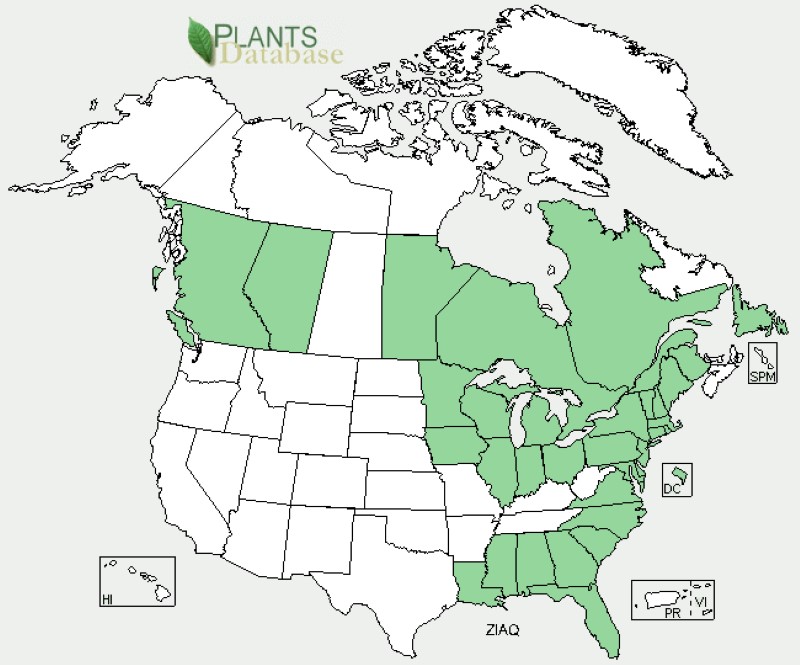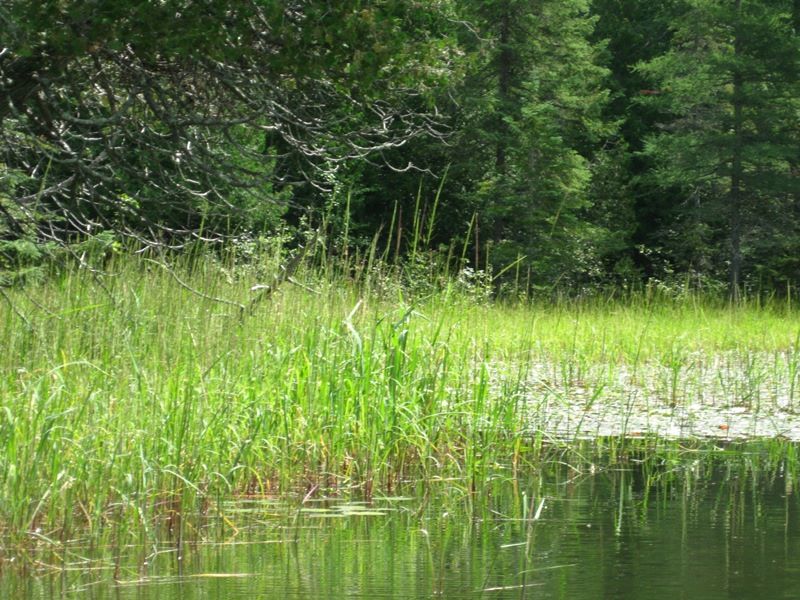Plant of the Week
 Range map of wildrice. States are colored green where wildrice may be found.
Range map of wildrice. States are colored green where wildrice may be found.


Annual Wildrice (Zizania aquatica L. or Zizania palustris L.)
By Sue Trull
Wildrice, like commercial rice, is a grass. Wildrice is an unusual grass because 1) it grows in water, 2) it is an annual plant, starting from seed every year, 3) the male and female flowers are separate, although on the same stalk, and 4) wildrice is very important culturally and ecologically as a food source.
Wildrice grows in lakes, flowages, and rivers, where the water depth is about ½ to 3 feet, and there is some water flow. Wildrice prefers a softer substrate—such as a few inches of soft organic muck—but can grow on harder substrates such as sand. Water clarity is important, with clear water providing better habitat than darkly stained water. Acidity and sulfate levels are also important in determining where wildrice will grow.
Wildrice grows from large seeds which ripen in late August and early September and fall from the plant. The seeds are shaped like narrow cylinders, designed to dive rapidly down to the mud where they persist for the winter or may remain dormant for a few years. In spring many seeds will germinate, and produce several underwater leaves. By early summer, the plants produce ribbon-like leaves which float on the water surface. Soon, aerial stems and leaves develop, extending from the muck, through the water, and several feet into the air. Later in the summer, flowers develop, with the female flowers on the top part of the aerial stem and the male flowers below. Pollination occurs by wind. Seed production and ripening varies among plants and lakes, and there are typically years with many seeds alternating with mediocre or minimal seed production.
Wildrice, or “manoomin” in the Anishinaabe language, is a significant plant to Native American tribes in the rice range, providing an important food source. Wildrice is traditionally harvested by canoe, with one person poling the boat through the dense grass beds. The other harvester sits in the canoe and reaches out for wildrice stalks with a long narrow stick, bending the stems over the boat and gently knocking the grains into the boat with a second ricing stick. Many seeds are also knocked into the water during this process, ensuring re-seeding of the bed for the next year.
After harvest, rice grains may be planted while fresh or processed for eating. Processing requires several steps: parching to remove moisture, cracking off the sheath covering the grain, and winnowing the chaff. Wild rice is usually cooked by boiling for 30-40 minutes and can be used in a variety of dishes. The grain is nutritious, with a high protein and carbohydrate content and low in fat.
Wildrice is an important food source for waterfowl such as mallards, ring-necked ducks, teal, wood ducks, Canada geese, and others. Rice also provides food, cover and habitat for muskrat, moose and other aquatic organisms. Like other wetland plants, wildrice can improve water quality by trapping sediments and taking up nutrients.
Wildrice beds have declined from historic levels. Causes include water level changes due to dams, pollution, boat wakes, competition from other species, beaver activities, lakeshore development, exotic species, overharvest, and others. Rice bed restoration has occurred in some areas; conflicts occur with recreational uses (rice beds can be too dense for boat travel) and visual impacts where riparian owners may not like the “sea of grass”.
Wildrice is designated as Minnesota’s “state grain”. Wildrice has “threatened” status in Ohio, “rare” status in Pennsylvania, and “special concern” status in Rhode Island.

